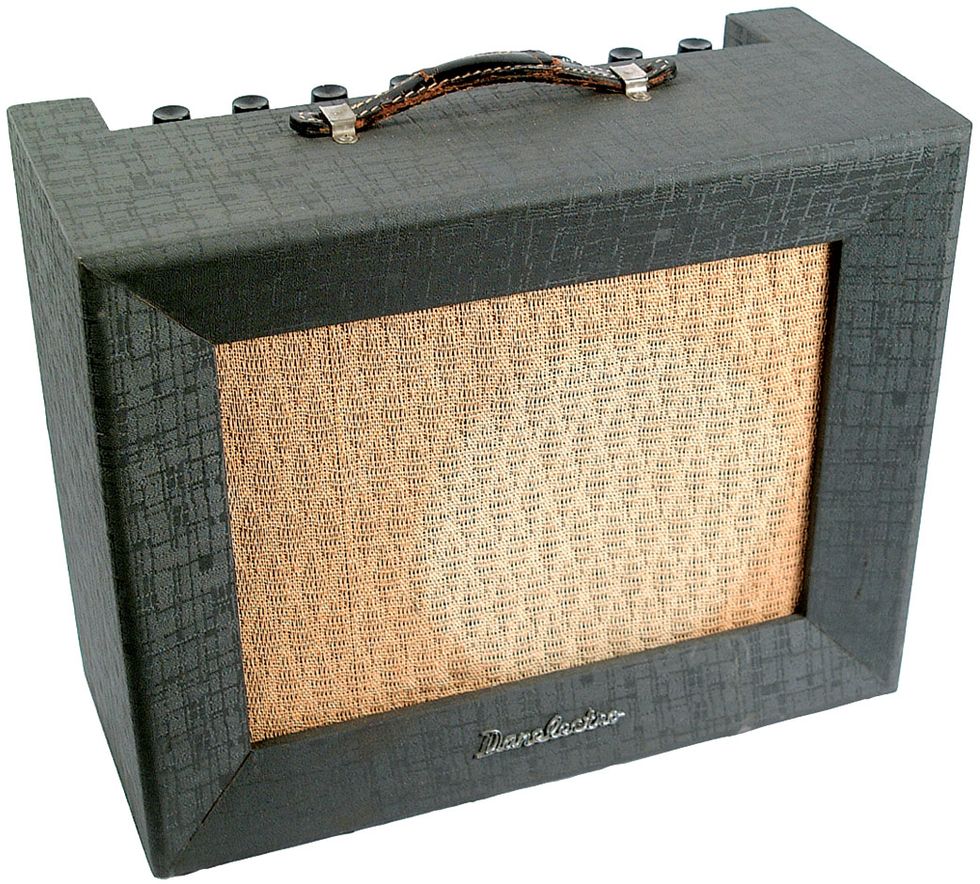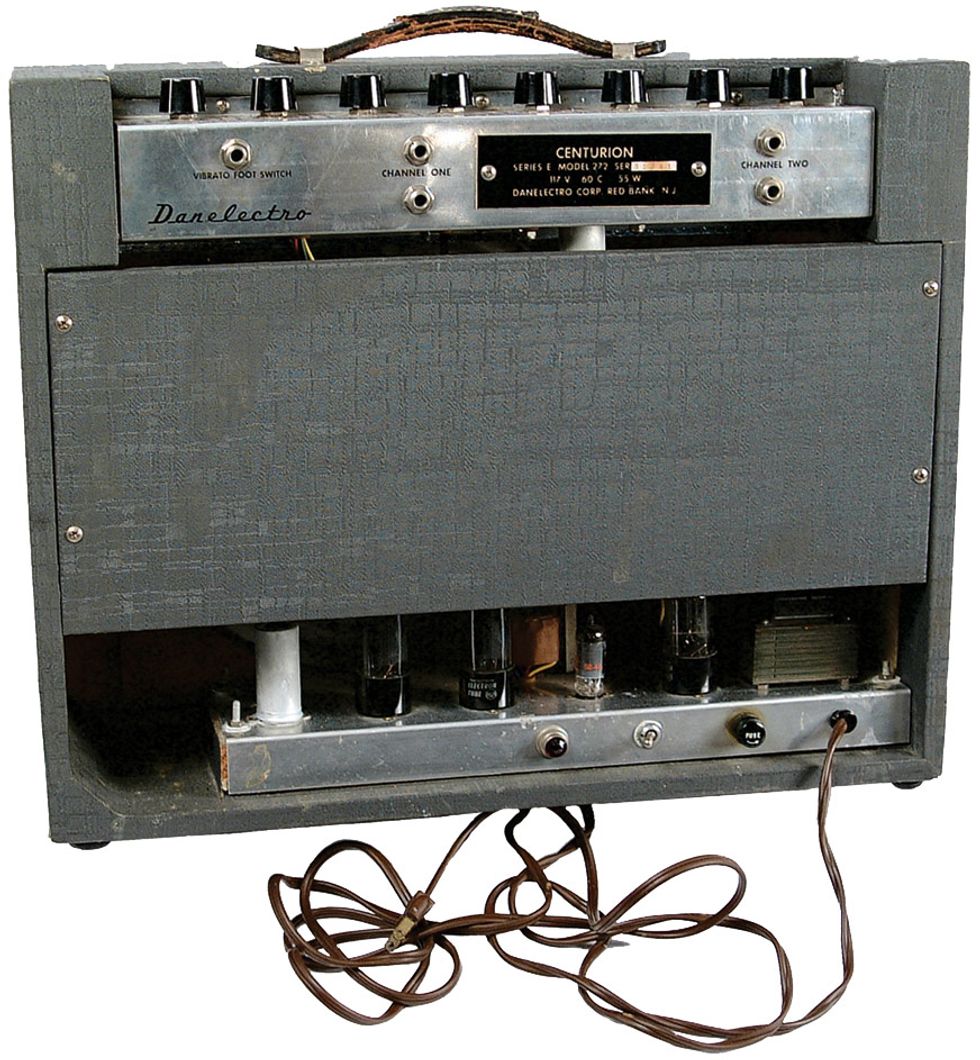Hey Zach,
I have this nice little Danelectro amp that I bought in the late 1970s to play in my college dorm. Turns out it was a bit loud for that! I lent it to a friend for several years and recently got it back. Amazingly, it is still in very good condition cosmetically, but could use a tune-up. I would like to know what it is worth today and what is needed to get it in good working order.
Thanks,
Jim in Cincinnati, Ohio
Hey Jim,
Cool amp! It reminds me of the band the Animals for some reason—maybe because that’s how the Animals played: loud!
Danelectro is better known for their electric guitars with unique shapes and designs, but the company initially started as an amplifier company. Nathan “Nat” Daniel was an electronics enthusiast from New York who began assembling amplifiers at home. In the mid 1930s, Epiphone contracted him to make their Electar series of amps, where he built the chassis and a suitcase company provided the cabinet.
After establishing himself as an amp builder, he founded Danelectro in 1947 in Red Bank, New Jersey. Daniel then started building amps for Montgomery Ward and Sears, Roebuck and Co., which would propel his operation to a size he could hardly have imagined.
In 1954, the same year the Stratocaster was introduced, Daniel released the first Danelectro electric guitar. A majority of the guitars Daniel built were actually branded as Silvertone and sold through Sears. Airline was another house brand built by Danelectro and sold through Ward. Just think about all the kids who wanted to play guitar in the late 1950s and 1960s, and how a Sears and Roebuck catalog is where they likely found their first guitars! During Danelectro’s peak production in the 1960s, they had upwards of 500 employees and were producing 150 to 200 guitars a day!
Danelectro amplifiers were not quite as popular as their guitars, but since you needed an amp if you had an electric guitar, they are still out there. Your 15-watt Centurion was produced during Danelectro’s heyday, between 1962 and 1964, and has a 12" speaker, two channels with separate controls, and vibrato and reverb. The amp’s foundation was a 7-tube chassis with 6V6GT power tubes. Covered in an attractive dark-blue vinyl and sporting a brown grille cloth, it was very stylish for the early 1960s. Comparable models from the era were the Fender Deluxe or the Gibson GA-20. I imagine playing in a dorm room with this amp would be plenty loud!
Features for the 15-watt tube combo include two channels with separate controls, as well as vibrato and reverb.
Just like cars or any other mechanical devices, an amp needs maintenance—especially if it’s been sitting for several years. For a few hundred bucks, any reputable amp repair shop should be able to clean up and tune up this gem with new tubes, caps, and resistors. It’s also not a bad idea to upgrade the power cord to a grounded 3-prong for safety’s sake. It’s not nearly as collectible/valuable as a Fender or Gibson from the same era, but your amp is currently worth between $450 and $550 in excellent condition. That’s not bad for something considered “no frills” once upon a time.
Danelectro’s success was short-lived, and they sold to the entertainment conglomerate MCA in 1966. In 1967, the Coral line of guitars was introduced to bring focus on Danelectro’s brand, and not Sears. Even though approximately 85 percent of their sales were through Sears as a house brand, MCA decided to compete with Fender and Gibson directly by marketing to individual music shops rather than the big distributors. This proved to be a fatal blow to the company and they closed in 1969. In the mid 1990s, however, the Evets Corporation bought the Danelectro name and has been producing various guitars and amplifiers since. They’ve recently focused on an annual limited-edition run of guitars based on famous Danelectro designs.
With proper maintenance and storage (and use), this amp should continue to be a treasure for years to come, even if people tell you to turn it down!








![Rig Rundown: Russian Circles’ Mike Sullivan [2025]](https://www.premierguitar.com/media-library/youtube.jpg?id=62303631&width=1245&height=700&quality=70&coordinates=0%2C0%2C0%2C0)

















